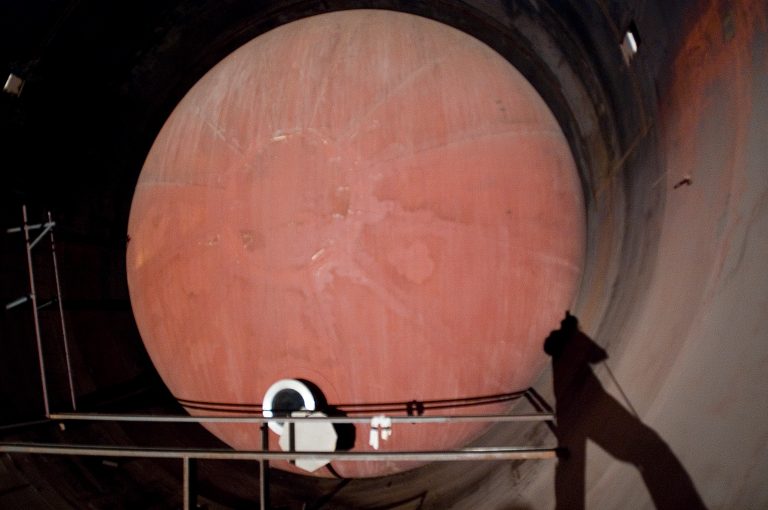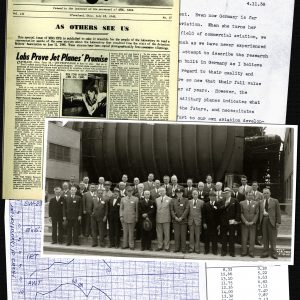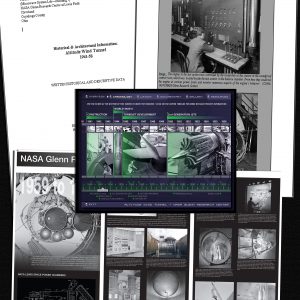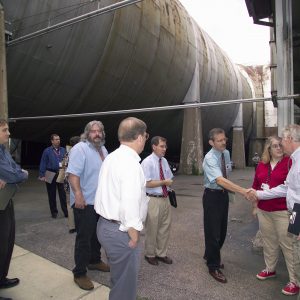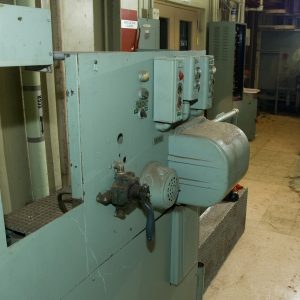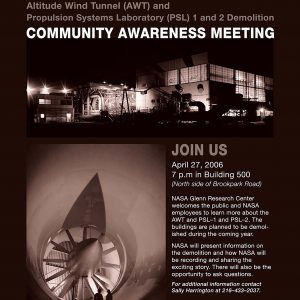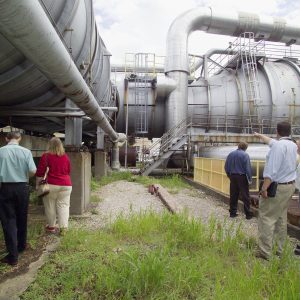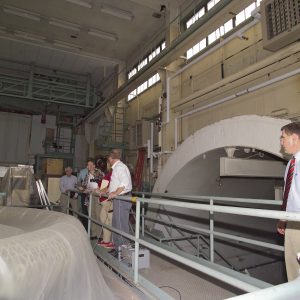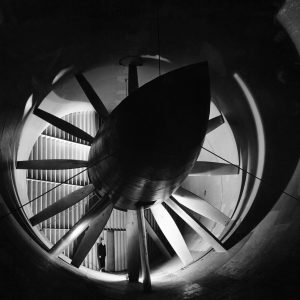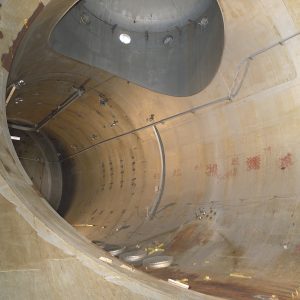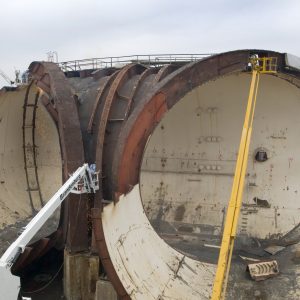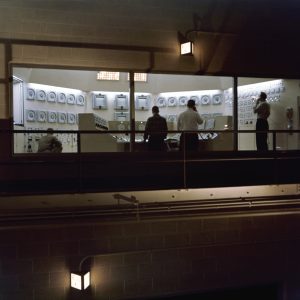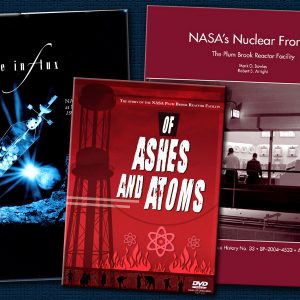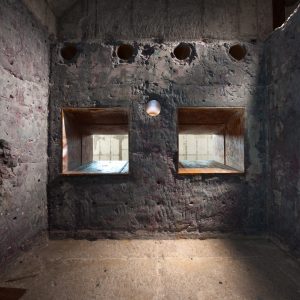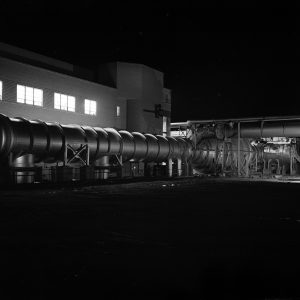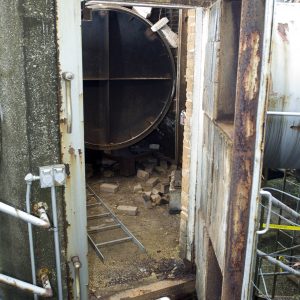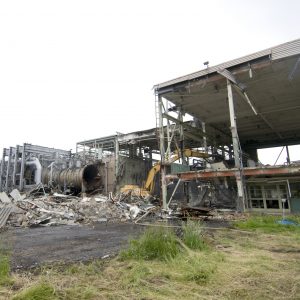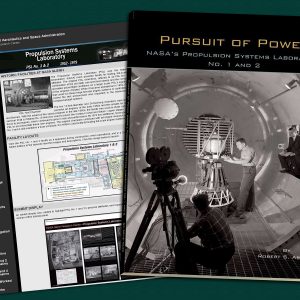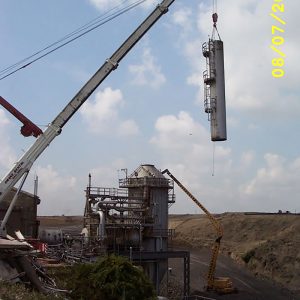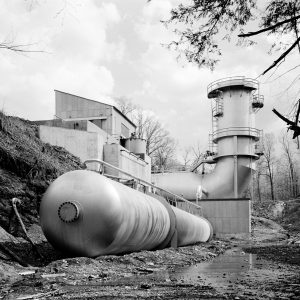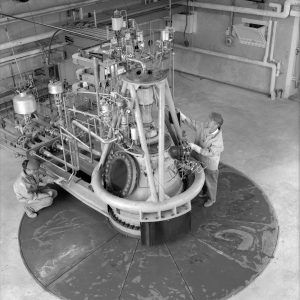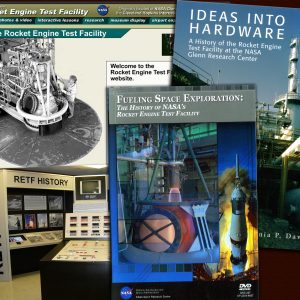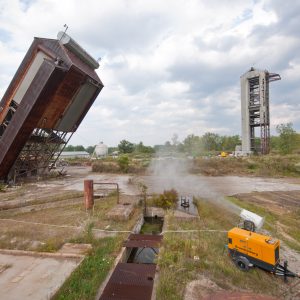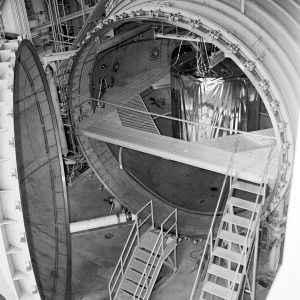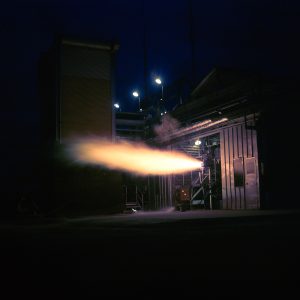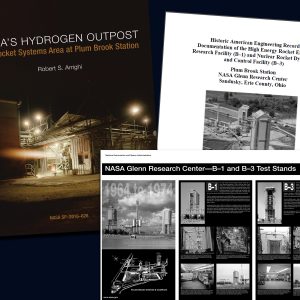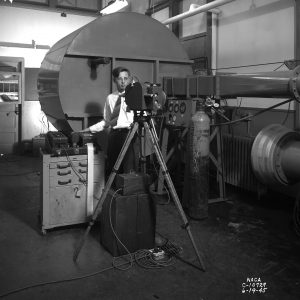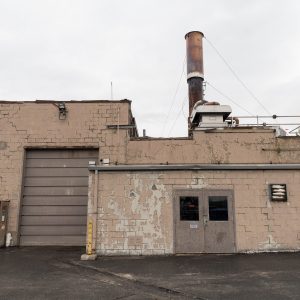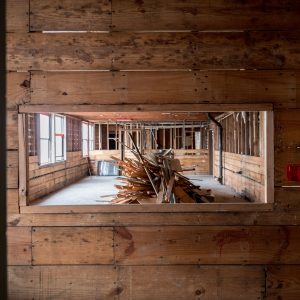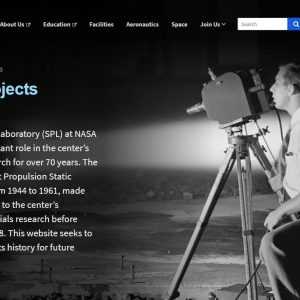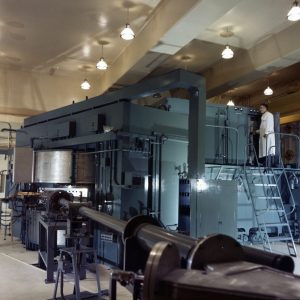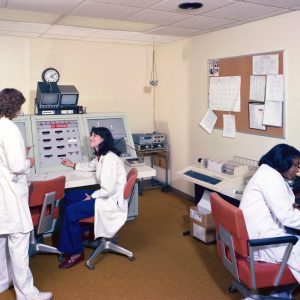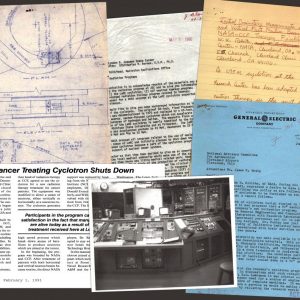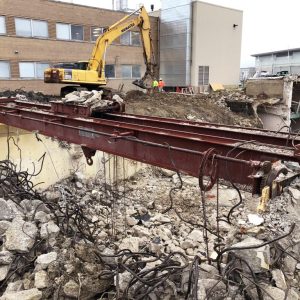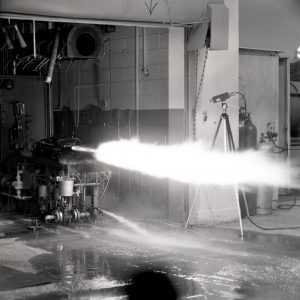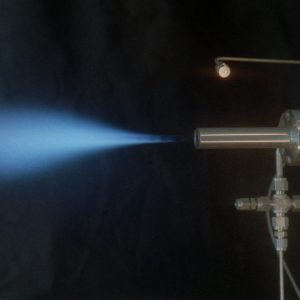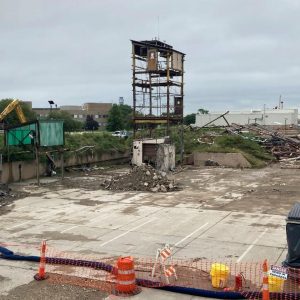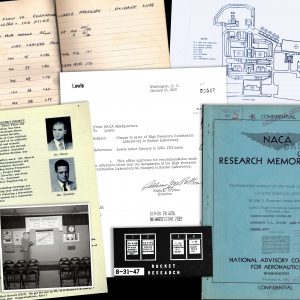Historic Preservation
NASA Glenn Research Center has a number of historic facilities, some of which have been demolished in recent years. Many of these sites had not been fully utilized for years and were in disrepair. Section 106 of the National Historic Preservation Act(NHPA) requires every federal agency to consult with the State Historic Preservation Offices on archaeological work, changes to existing buildings, demolitions, ornew construction. The consultation process sometimes results in the need for mitigation or documentation.
Although most of these demolished facilities were not eligible to be a National Historic Landmark, Glenn felt that their contributions to advancement of the nation’s aerospace research and technology warranted permanent documentation to record the history of these facilities and disseminate that information to the public.
Mitigation Work
The NASA Glenn Historic Preservation Office has worked with the Ohio State Historic Preservation Office and Glenn History Office to develop strategies, budgets, and work plans to record the history of these facilities. These projects consists of two facets—the documentation and preservation of the facility’s history and the interpretation and dissemination of that information to the public.
The documentation included the collection of documents and audio/visual materials from the Glenn Records holdings, the Glenn History Office archives, retirees, the NASA Technical Reports Server, newspaper databases, and other sources. It also includes the scanning of negatives, conducting interviews with former employees, and performing photographic surveys of the sites prior to their demolition.
The collected information is distilled into a variety of different products that are made available to the public and NASA staff. These have included books, documentary videos, websites, exhibits, interactive media, and Historic American Engineering Reports.
These efforts strive to create a permanent documentary record for the facility, offer lessons learned for the agency, increase public awareness of NASA Glenn contributions to society, and provide a collected body of materials for future researchers.
In accordance with the National Preservation Act, the center has also held community awareness meetings before each demolition. The attendees learn details about the proposed demolitions, the history of the facilities, efforts underway to document the facilities, and the results of the environmental impact studies conducted for the projects. The meetings give the attendees the opportunity to ask questions and voice any opposition to the projects.
- NASA John H. Glenn Research Center: The Evolution of an Historic District video (2016)
- Community Awareness Meeting release (2006)
- AWT-PSL Demolition slides (2006)
- AWT-PSL Meeting brochure (2006)
- AWT-PSL Mitigation slides (2006)
- AWT History slides (2006)
- PSL History slides (2006)
Mitigation Resources
Glenn Mitigation Documents
- AWT Historical Mitigation Agreement (2007)
- AWT Ohio Historic Inventory
- AWT Section 106 Report (2008)
- PSL Historical Mitigation Agreement (2007)
- ACHP Section 106 Process for PSL 1 and 2
- RSA Historic Mitigation Agreement (2012)
- B-1 and B-3 Ohio Inventory (2005)
- RETF Ohio Historic Inventory Form (1996)
- RETF Historical Mitigation Agreement (2000)
Agency Mitigation information
- Section 106 – Protection of Historical Properties (2004)
- Programmatic Agreement Among NASA, NCSHPOs, and ACHP (1989)
- NASA’s Historical Preservation website
- Ohio State Historical Preservation Office
- Advisory Council on Historic Preservation
- National Park Service Historic Documentation Programs
Glenn Mitigation Projects
Altitude Wind Tunnel
When constructed in the early 1940s, the Altitude Wind Tunnel (AWT) was the Nation’s only wind tunnel capable of studying full-scale engines under realistic flight conditions. It played a significant role in the development of the first U.S. jet engines as well as technologies such as the afterburner and variable-area nozzle. In the late 1950s, the center removed the tunnel’s interior components to test hardware for Project Mercury in altitude conditions. In 1961, the tunnel was converted into one of the country’s first large vacuum tanks to support the Centaur rocket program.
- Website: Altitude Wind Tunnel
- Revolutionary Atmosphere: History of the AWT and Space Power Chambers (SP-2010-4319)
- A Tunnel Through Time: The History of NASA’s Altitude Wind Tunnel (Video: SP-2010-4609)
- AWT Historic American Engineering Report , Vol. 2, Vol. 3
Plum Brook Reactor Facility
The Plum Brook Reactor Facility at Plum Brook Station [today, Neil Armstrong Test Facility] operated from 1962 to 1973. The National Advisory Committee for Aeronautics (NACA) purchased the land in 1956 to build a test reactor to support nuclear propulsion research, first for aircraft then rockets. The 60-MW reactor conducted over 70 experiments, most of which studied the effects of radiation on various materials. The reactor ceased operation in 1973 when the Nation’s nuclear rocket program was canceled. Decommissioning began in 1998.
- Science in Flux: NASA’s Nuclear Program at Plum Brook Station (SP–2006–4317)
- NASA’s Nuclear Frontier: The Plum Brook Reactor Facility (SP–2004–4533)
- Of Ashes and Atoms video documentary (SP-2004-4605)
Propulsion Systems Laboratory No. 1 and 2
The Propulsion Systems Laboratory (PSL) was the NACA’s most powerful facility for testing full-scale aircraft engines at simulated flight altitudes. Researchers used PSL to study the increasingly powerful jet engines of the early 1950s and the ramjets for missile programs. With the advent of the space program, the facility was used to study complex rocket engines, including the seminal Pratt & Whitney RL–10. In the mid-1960s, PSL returned its focus to jet engines, which continued to grow in size and performance.
- Website: Propulsion Systems Laboratory No. 1 and 2
- Pursuit of Power: NASA’s Propulsion Systems Laboratory No. 1 and 2
- PSL Historic American Engineering Report
Rocket Engine Test Facility
The Rocket Engine Test Facility (RETF) was a National Historic Landmark located at the NASA Glenn from 1957 to 2003. The facility played an integral part in the development of high-energy liquid propellants. Testing of subscale rocket engines in RETF expanded understanding of combustion and led to new designs. RETF made valuable contributions to Pratt & Whitney’s RL–10 engine and Rocketdyne’s F–1 and J–2 engines.
- Website: Rocket Engine Test Facility
- Ideas Into Hardware: A History of the Rocket Engine Test Facility
- Fueling Space Exploration (Video: SP-2005-4607)
- RETF Historic American Engineering Report
Rocket Systems Area
In the 1960s NASA Glenn Research Center’s remote testing facility at Plum Brook Station in Sandusky, Ohio, was an essential element in the development of liquid-hydrogen propulsion systems for rocket engines. At its peak, Plum Brook contained 15 different facilities with at least 24 test rigs and cells that tested turbopumps, engine components, and propellant tanks for these hydrogen-powered rocket systems.
- Website: Rocket Systems Area
- NASA’s Hydrogen Outpost: The Rocket Systems Area at Plum Brook Station (NASA SP-2016-628)
- B-1 and B-3 Historic Engineering Report (2010)
Special Projects Laboratory
The Special Projects Laboratory (SPL) at the NASA Glenn Research Center played an important role in the center’s aeropropulsion research for over 70 years. The facility, which was named the Jet Propulsion Static Laboratory (JPSL) from 1944 to 1961, made significant contributions to the center’s propulsion and materials research before being removed in 2018.
- Website: Special Projects Laboratory
Cyclotron Facility
The Cyclotron Facility was built in the 1950s to study effects of radiation on materials for nuclear aircraft engines. The research expanded to general nuclear physics, the effect of solar radiation, and production of medical isotopes. In the 1970s and 1980s the Cleveland Clinic Foundation used the cyclotron to study the effect of fast neutrons on cancerous tumors.
- Website: Cyclotron Facility
Rocket Laboratory
The Rocket Laboratory at the NASA Glenn Research Center was critical to the development of high-energy liquid propellants such as liquid hydrogen in the 1940s and 1950s. The facility’s once-rudimentary equipment was subsequently replaced with advanced technologies. The versatile suite of test cells has since tested an array of thrusters, combustors and alternative fuels.
- Website: Rocket Laboratory

